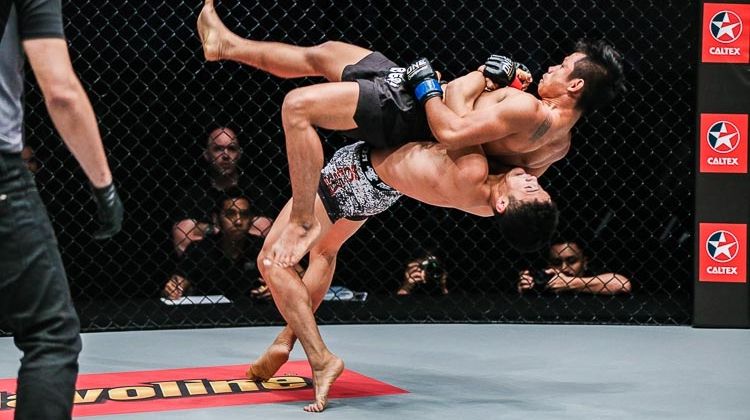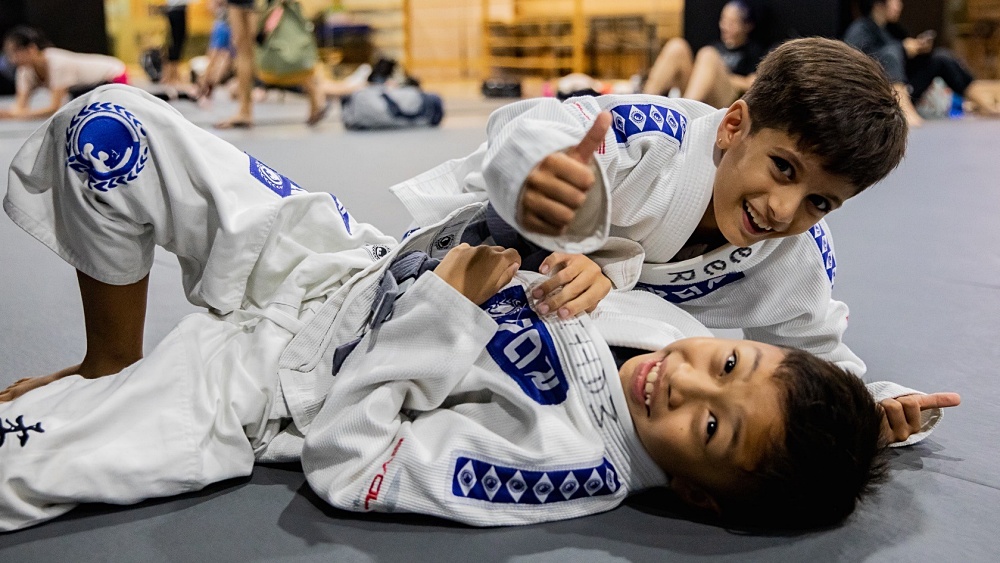The rear body lock is one of the most common positions Brazilian Jiu-Jitsu (BJJ) practitioners and MMA fighters find themselves in, as it naturally arises from a litany of common grappling situations. It can be actively pursued on the feet through the use of snap downs, arm drags, and many other techniques, or it can manifest as the result of a scramble that started on the floor, such as an attempted back take or dog fight sweep from the half guard. Regardless of how you got there, it is crucial that you know the following three attacks from the rear body lock so that you can always be looking to take your opponent down!
1) The Rear Trip
One of the biggest mistakes BJJ practitioners make when they begin to move beyond the “novice” stages of their BJJ career is to disregard all the techniques they previously learned, as they believe they are only “for beginners.” While it is always good to continue to learn new techniques, just because a move is taught to beginners and white belts does not mean that it is invaluable against more experienced grapplers.
A perfect example of this is the basic rear trip from the rear body lock: as it is often taught as the first takedown a new student should look to employ, students tend to move on from it once their skills develop. This is a mistake, as the rear trip is an incredibly effective technique that should be used throughout the entirety of one’s BJJ journey.
To execute the rear trip, the first thing you should do is move off to the side of your opponent so that you are perpendicular to him. Your head should be placed on his back, so your ear is flush with his spine. Then, place your foot that is further away from him right behind his far heel. So if you moved off to his left side, your right foot should be placed right behind his right heel. This is known as “crossing the T,” and is very important for this technique to work. Now, keeping your waist lock tight, sit down as you spiral your opponent to the mat; your “T” will prevent him from stepping backward, placing him down on his side and giving you top position!
2) The Mat Return
While basic techniques like the rear trip should never be disregarded, no technique works 100% of the time. But if your opponent is able to defend the rear trip, he will have likely opened himself up for you to execute a mat return! Originally pioneered from wrestling, the mat return is a great way to get your opponent down to the mat in a safe, yet exciting way.
If you have achieved the perpendicular angle necessary to set up the rear trip, but your opponent is not allowing you to “cross the T,” you can move to the mat return. First, make sure your grip on his waist is secure; you’ll want your hands locked right on your opponent’s far hip. Then, bring both of your legs underneath you as you squat down in preparation to lift your opponent. By keeping your grip tight and driving your hips forward as you stand up, you will lift your opponent up into the air. Now slightly tilt him forward, forcing him to post his hands on the mat. You should end in the top turtle position, where you can look to attack with chokes or take the back!
3) 50/50 Heel Hook
While our previous two techniques are great for beginners and seasoned BJJ practitioners alike, our next technique will definitely be better suited for those who are a bit more advanced in their BJJ journey. However, just because this technique looks flashy and elaborate, that does not mean that it is ineffective or a waste of time. Leg locks are very popular in both BJJ and No-Gi Submission Grappling, so this is an important technique to learn even if you only have an interest in defending leg attacks!
If the previous two takedown techniques have been stifled, or you are unable to achieve the perpendicular angle necessary to even begin them, then this is a perfect time to drop down for a lower-body attack, such as the 50/50 heel hook! The first step to enter into 50/50 is to take one of your legs up into the air behind you. Then, in one swift motion, swing your leg between your opponent’s, as you slide down to your back and spiral around his leg so you are facing him. You should now have one of your legs intertwined around your opponent’s with the back of your calf on his hip, while they are standing over you. With the position established, you can now work to dropping your opponent down to the mat.
To get your opponent down and finish the submission, cross your ankles and drive to the side, forcing your opponent down. From here, you can work towards applying the inside heel hook in a slow and controlled manner: if the heel hook is illegal for your skill level, then it would be best to pursue a more beginner-friendly submission, such as the straight ankle lock.
Whether you are a grappler who likes to frequently work for the takedown from your feet, or if you prefer the ground-based aspects of BJJ, as the rear body lock occurs from a litany of positions, it is important for you to learn how to take your opponent down from this position. While you will naturally be drawn to one of our three techniques, all of them are important to learn as they are useful at different times, so don’t forget to practice all of them frequently!
You may also like:
















